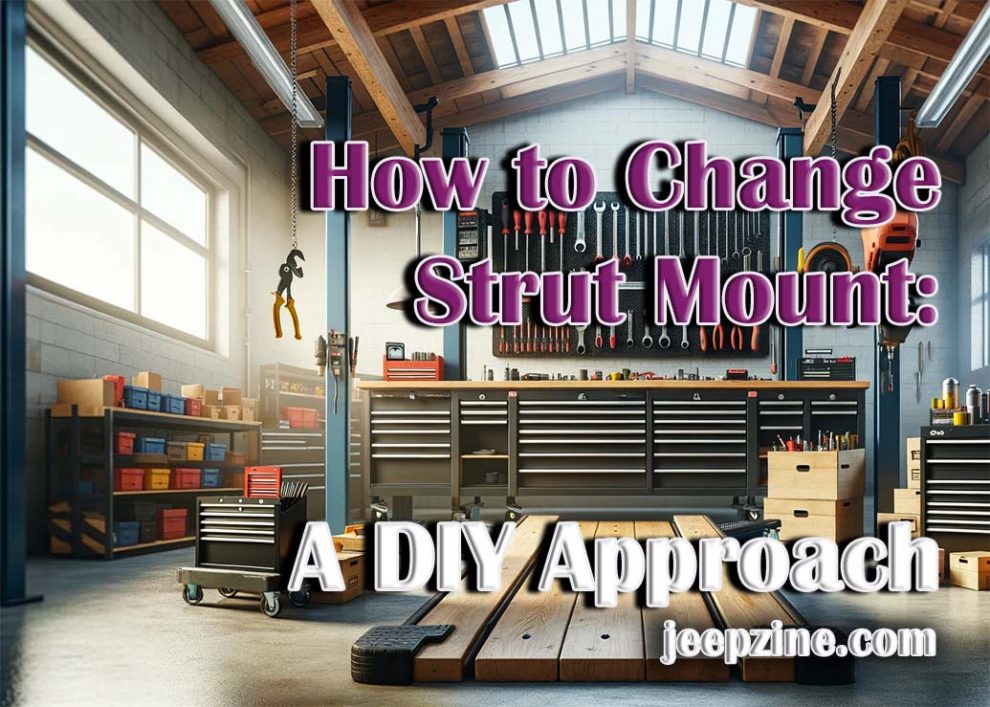Strut mounts are not just any component in your vehicle; they are the silent heroes that bear the brunt of road irregularities, ensuring you enjoy a smooth ride. Positioned at the top of the vehicle’s strut assemblies, these mounts serve as the main pivot points for the steering system and help isolate road noise, bumps, and vibrations. The longevity and performance of strut mounts directly impact the comfort, safety, and handling of your vehicle, making their maintenance and timely replacement critical for every car owner.
Identifying Worn Strut Mounts
The early identification of worn strut mounts is crucial to avoid more significant issues down the line. Symptoms of wear can be diverse and impact various aspects of your vehicle’s performance. For instance, you might notice unusual noises such as knocking or clunking when traversing over bumps or potholes. Steering might become less responsive or exhibit stiffness, directly affecting your control over the vehicle. Another clear sign is uneven tire wear, which not only signals strut mount issues but also can lead to premature tire replacement. Lastly, poor alignment, characterized by your vehicle pulling to one side, can indicate that the strut mounts are failing. Recognizing these signs early can save you time and money, preventing further damage to your vehicle’s suspension system.
Required Tools and Preparation
To tackle the task of changing strut mounts, you’ll need a set of tools that most DIY enthusiasts likely have in their garage. This includes a hydraulic jack and jack stands for lifting and securing the vehicle, a variety of wrenches and sockets to remove bolts and nuts, and possibly a torque wrench for reassembly to the manufacturer’s specifications. Before you begin, it’s also wise to apply a rust penetrant to the bolts and nuts you’ll be working with, especially if your vehicle is older or has been exposed to harsh conditions. This preparatory step can significantly ease the disassembly process, reducing the risk of breaking or stripping bolts.
Step-by-Step Strut Mount Replacement Process

The steps for replacing a strut mount can be summarized in a list for clarity:
- Securely lift and support the vehicle.
- Remove the affected wheel to access the strut assembly.
- Carefully disassemble the strut to remove the old strut mount.
- Install the new strut mount and reassemble the strut.
- Reinstall the strut assembly and wheel, then lower the vehicle.
For those considering further enhancements to their vehicle, integrating the best shocks for Ford Ranger into this maintenance routine can further optimize ride quality and handling. This proactive approach to vehicle care ensures both safety and performance, providing a smoother, more controlled driving experience.
Aligning and Final Checks
Once the new strut mount is installed, it’s imperative to perform a series of checks to ensure everything is aligned correctly. Initially, a visual inspection and a test drive can help identify any immediate issues with the installation. However, it’s highly recommended to take your vehicle to a professional for a comprehensive wheel alignment. This step is crucial because even slight misalignments can cause uneven tire wear and negatively impact the vehicle’s handling and safety. Ensuring that your vehicle is properly aligned after changing the strut mounts will help maintain optimal driving conditions and extend the life of your tires and suspension components.
Conclusion
Undertaking the task of changing a strut mount is a rewarding challenge that can have a significant impact on your vehicle’s ride quality and overall safety. With the right tools, preparation, and attention to detail, this is a project well within the reach of dedicated DIYers. Not only does this maintenance work save money on professional labor costs, but it also provides a deeper understanding of your vehicle’s suspension system. By following the guidelines and procedures outlined in this article, car owners can confidently approach the task of replacing their strut mounts, ensuring their vehicle remains safe, comfortable, and enjoyable to drive for many miles to come.

